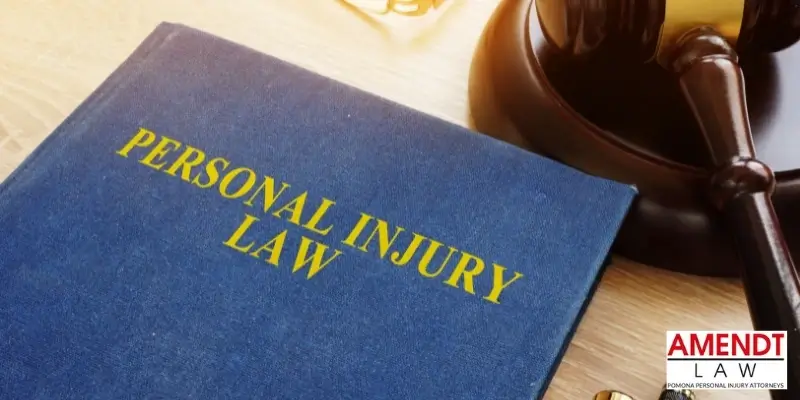Call Us : (909)-766-1994
Average Personal Injury Settlement in California (2025)

The aftermath of a personal injury can leave you with mounting medical bills, lost wages, and uncertainty about your future finances. Under the state’s personal injury laws, you may be entitled to compensation that can grant you some relief from your financial woes. One important step is to understand the average personal injury settlement in California and the factors that shape compensation in a personal injury claim.
Determining the average personal injury settlement in California isn’t straightforward—every case is different, and outcomes depend on many variables. The severity of your injuries, the cost of medical care, lost income, who was at fault, and the available insurance coverage all play a role in the final compensation.
That said, general settlement ranges can offer some perspective:
- Minor injuries (e.g., soft tissue injuries): $2,500 to $25,000
- Moderate injuries (e.g., fractures, surgeries with full recovery): $25,000 to $100,000
- Serious injuries (e.g., long-term impairment or chronic pain): $100,000 to $500,000
- Severe or catastrophic injuries (e.g., spinal cord damage, traumatic brain injuries, permanent disability): $500,000 to several million dollars
These are broad estimates, and no two cases are the same. The most reliable way to understand what your case may be worth is to contact an attorney—an experienced personal injury lawyer can assess your unique circumstances and fight for the compensation you deserve.
Factors That Influence a Personal Injury Settlement in California
Settlements are commonly used to resolve personal injury claims. When both sides agree on a settlement figure, the case can be closed with little difficulty. The size of an individual settlement is determined by factors that often include the severity of the injury and the impact of the injury on the plaintiff’s daily life. Other factors include:
- Medical expenses. The cost of medical treatment, including emergency care, surgeries, rehabilitation, ongoing therapy, and future medical needs, plays a major role in determining the value of a settlement.
- Lost wages. If the injury forced the victim to miss work, any income lost during recovery can be claimed. This also includes loss of future earning capacity if the injury results in long-term disability or a career change.
- The degree of pain and suffering. Non-economic damages like physical pain, emotional distress, trauma, and reduced quality of life are evaluated to determine how significantly the injury has affected the victim’s day-to-day living.
- The at-fault party’s insurance coverage. The policy limits of the at-fault party’s insurance can affect the total payout. If damages exceed coverage limits, the injured party may need to seek compensation through other means.
- Any liability shared by the plaintiff. Under California’s comparative negligence rule, a plaintiff’s compensation may be reduced if they are partially at fault for the accident. For example, being 20% at fault would reduce the settlement by 20%.
The quality of the plaintiff’s legal representation can also significantly influence the outcome of a personal injury claim. A skilled attorney can carefully calculate the total compensation their client is owed and gather evidence to build a strong case that maximizes the value of a settlement.
Types of Damages Available in a Personal Injury Case in California
The types of damages that are included in your eventual settlement can also greatly influence how much you are paid for your injury. There are three basic types of damages that you may be eligible for.
Economic damages. These include quantifiable losses such as medical bills, lost income, and property damage. Depending on the severity of the injury, medical expenses alone can range from a few thousand dollars to well over $100,000 in complex cases. These costs are typically documented and added directly to the final settlement.
Non-economic damages. These cover less tangible losses like emotional distress, loss of enjoyment of life, and pain and suffering. Personal injury attorneys often rely on multipliers—typically between 1.5 and 5 times the value of economic damages—to estimate this amount, depending on the circumstances.
Punitive damages. These are awarded in cases involving egregious negligence or intentional misconduct, and are meant to punish the defendant rather than compensate the victim. While rare, punitive awards can sometimes add tens or even hundreds of thousands of dollars to a jury verdict, particularly when corporate or reckless behavior is involved.
How Liability Affects Your Settlement Amount
Your settlement may also be reduced by your percentage of fault if it is found that your actions contributed to your injury. Under the state’s pure comparative negligence rule, plaintiffs can seek compensation even when they bear some level of responsibility for causing their injury.
If you are found to be 10% responsible for your injury, for example, the courts will deduct 10% of your settlement. If fault is disputed, both parties may negotiate until they reach a final understanding of liability. Having legal representation can improve the odds that you are not found to be at greater fault than the evidence bears out.
Understanding Insurance Limits in Personal Injury Claims
The amount of compensation you receive may be limited by the size and type of insurance coverage held by the negligent party. Insurance companies set caps on how much money they pay out for an individual claim. If the negligent party is uninsured, your own uninsured motorist coverage may help you recover additional compensation.
If the insurance company’s policy does not fully compensate you for your injuries, you may still have the option of taking the at-fault party to court by filing a personal injury claim with the help of an attorney. Insurance companies play an active role in settlement negotiations, and their willingness to pay fair compensation could influence the outcome of negotiations.
California Personal Injury Settlement Amount Examples
Every personal injury case is unique, and accurately valuing a claim requires a detailed understanding of the facts involved. That said, past case outcomes across California can offer a general idea of what to expect under typical circumstances.
Here are estimated settlement ranges for some of the more common types of personal injury cases in California:
- Pedestrian Accidents: Typically range from $30,000 to $100,000, depending on the extent of injuries and liability.
- Bicycle Accidents: Settlements may fall between $20,000 and $80,000 when involving a motor vehicle or serious injuries.
- Car Accidents: Common cases result in settlements from $15,000 to $75,000, though serious or long-term injuries can exceed this.
- Motorcycle Accidents: Because injuries are often more severe, these cases may settle anywhere from $50,000 to several hundred thousand dollars.
- Truck Accidents: Due to the scale of impact and insurance involved, settlements can start at $100,000 and reach well over $500,000.
- Workers’ Compensation: Many claims fall between $10,000 and $40,000, based on medical needs, time off work, and disability rating.
- Traumatic Brain/Catastrophic Injuries: These can result in six- to seven-figure settlements, depending on long-term care and impact on life.
- Wrongful Death: Settlements vary widely but often begin around $250,000 and can exceed $1 million in cases involving lost income or dependents.
These estimates are based on publicly available case results and industry trends. Actual settlement values depend on your unique circumstances and should be reviewed with a qualified attorney.
FAQs
What Is Considered a Fair Personal Injury Settlement?
A fair injury settlement is any settlement that fully restores an injured party for the financial losses they incurred following an injury and the emotional hardships of recovery. Plaintiffs should not suffer financial losses due to someone else’s negligence or misconduct, and a personal injury claim provides injured parties with important resources to secure compensation for their losses.
How Are Personal Injury Settlements Calculated in California?
In California, personal injury settlements are calculated by evaluating both the economic and non-economic losses suffered by the injured party. This includes medical expenses, lost wages, property damage, and future costs related to the injury. Non-economic damages, such as pain and suffering or emotional distress, are estimated using established legal formulas—often by applying a multiplier to the total economic damages.
Once your attorney has calculated a fair settlement value based on the full scope of your losses, they negotiate with the at-fault party’s insurance company or legal team. If both sides agree on the terms, the case can be resolved without going to court. However, if negotiations fail, the matter may proceed to trial, where a judge or jury determines the final compensation.
Is There a Limit to Compensation in a California Personal Injury Case?
California does not impose a general cap on personal injury compensation, except in specific cases such as medical malpractice. Plaintiffs are free to seek fair compensation for their injuries through settlements that can include both monetary and non-monetary forms of compensation. The courts generally advise juries to award damages, including punitive damages, that are reasonable and proportional to the harm caused. In medical malpractice cases, California currently caps non-economic damages at $350,000, with scheduled increases each year under the updated MICRA law.
Schedule Your Personal Injury Settlement Consultation Today
No amount of compensation can erase the pain and suffering you endured due to someone else’s negligence. A fair settlement can relieve you of the financial stress of paying for medical treatments and covering lost wages while you recover. With legal representation from Amendt Law, you can hold the negligent party accountable for the physical and emotional harm you suffered.
Our legal team can handle the legal aspects of your claim while you focus on recovering. We have a strong reputation for maintaining close communications with our clients. We make sure that you are well informed about your case and the implications of any decisions you make.
We understand how important your settlement is for your peace of mind and future financial stability, and we won’t rest until you are fully compensated for every penny you are owed. Contact our office today to schedule your consultation to learn how we can help you receive the justice you deserve.


